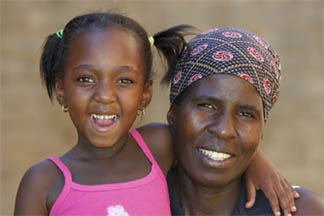HOME
PAST DIGITAL ISSUES
HIV/AIDS HOTLINES
HIV 101
POSITIVE PROFILES
ASO SPOTLIGHT
RECENT ARTICLES
HOW TO PAY FOR HIV TREATMENT AND MEDICATIONS
ADAP CRITERIA AND FORMULARIES
ASO LISTINGS
REVIEW OF HIV MEDICATIONS
2018 HIV/AIDS FUNDRAISING ACTIVITIES & EVENTS
ABOUT HIV POSITIVE! MAGAZINE
LINKS
SUBSCRIBE
CONTACT US
ADVERTISER INFORMATION
Where Do We Stand Now?

Every year at this time, in honor of World AIDS Day, we stop, take a deep breath, and try to assess where we stand now in the battle against HIV and AIDS.
On this World AIDS Day 2009, we can honestly say that—although there is still a long way to go—we’ve already come a long, long way.
First, let’s take a look back.
AIDS was unheard of until June 5, 1981. Suddenly, there was a health report on five otherwise healthy young men in Los Angeles, all active homosexuals, who developed Pneumoncystis carinii pneumonia (PCP)—a disease only found in those with compromised immune systems. Within a relatively short period of time, the underlying disease that made these men susceptible to PCP had a name: AIDS. And the panic was on.
The first 15 years of the worldwide AIDS pandemic were absolutely devastating. There was no effective treatment for this terrible new disease. It was simply a death sentence. Hospitals in major cities all had dedicated wards full of people with AIDS. Hospices sprang up to care for the dying.
The first drug effective against the disease was AZT, discovered in the virology lab at Burroughs Wellcome on November 16, 1984. But AZT was not enough to stop the progression of the virus by itself.
As years went by, scientists discovered additional drugs that were effective against the disease. Toward the end of 1995, there was a real breakthrough: clinical trials showed that using three or more drugs in combination could stop HIV in its tracks.
The multiple-drug approach to HIV treatment was called “Highly Active Antiretroviral Therapy” (HAART), and it changed everything. Virtually overnight, AIDS went from a death sentence to a chronic, manageable disease. AIDS wards and AIDS hospices closed down, because they were no longer needed. Since then, HIV medications have gotten better and better. Today’s HIV medications are more effective and easier to take than the ones available in 1995/1996, and they have fewer and milder side-effects. Today—in the United States and other developed countries—almost no one dies of AIDS if they are compliant with their drug regimen.
For a long time, unfortunately, the good news about HIV and AIDS seemed to be confined to the developed world. In the developing world, the AIDS pandemic raged on unchecked. Just six years ago, in hard-hit sub-Saharan Africa, only 50,000 people were getting HIV medications—a drop in the bucket. And many people doubted it was even possible to help many more.
Now—finally—there is good news to report, even in Africa and the rest of the developing world. Today, more than four million people in the developing world are on AIDS medications. Since 2003, the world has pumped $52 billion into providing these drugs and carrying out other measures to battle HIV and AIDS.
New institutions, such as UNAIDS and the Global Fund to Fight AIDS, Tuberculosis and Malaria, have been created since 2000 to tackle the problem. In 2003, the U.S. government launched an unprecedented five-year, $15 billion initiative—the President’s Emergency Plan for AIDS Relief (PEPFAR)—to assist 120 AIDS-impacted countries. As of this year, PEPFAR programs alone have extended the lives of 1.2 million people and enabled 240,000 babies to be born HIV-free. PEPFAR has also supported care for four million orphans and children left vulnerable by the pandemic. It has helped 57 million people receive HIV testing and counseling, and supplied more than 2.2 billion condoms from 2005 to 2008.
U.S. efforts to battle HIV/AIDS in the developing world will now become part of the Global Health Initiative (GHI), announced in May, 2009 by President Barack Obama. The GHI includes a continuation of PEPFAR, which the U.S. Congress has reauthorized through 2013.
Partly as a result of these efforts, the AIDS pandemic—which once seemed to be growing with no end in sight—is actually in decline. The estimated number of new HIV infections each year has dropped approximately 17% since 2001, according to a report from the World Health Organization and UNAIDS.
So is the war won? Far from it. Even today, of every five people newly infected with HIV worldwide, only two receive treatment. We still have no cure for AIDS, and no vaccine to prevent it. The war rages on—but there has been progress.
Copyright 2018, Positive Health Publications, Inc.
This magazine is intended to enhance your relationship with your doctor - not replace it! Medical treatments and products should always be discussed with a licensed physician who has experience treating HIV and AIDS!